Ditapis dengan
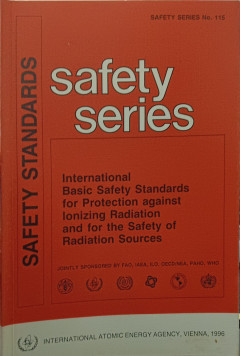
Safety Series No. 115 International Basic Sfety Standarts for Protection agai…
These International Basic Safety Standards for Protection against Ionizing Radiation and for the Safety of Radiation Sources mark the culmination of efforts that have continued over the past several decades towards the harmonization of radiation protection and safety standards internationally. (AR)
- Edisi
- -
- ISBN/ISSN
- 92-0-104295-7
- Deskripsi Fisik
- 354p.;24cm.
- Judul Seri
- Safety Series No.115
- No. Panggil
- 613.62 IAE S
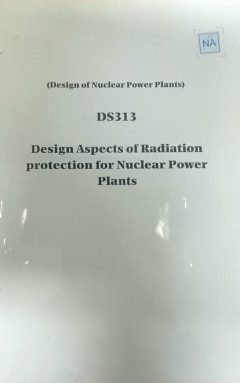
Working Material Draft Safety Guide Design Aspects of Radiation Protection an…
This safety guide has been prepared as a part of the Agency's programme, which is referred to as the nuclear safety standards (NUSS) programme, for establishing the requirements and safety guides that relate to nuclear power plants. This guide gives guidence on how to satisfy the requirements that are container in paragraphs 4.9 to 4.13 and 6.99 to 6.106 of the requirements for the safety of nu…
- Edisi
- 313
- ISBN/ISSN
- -
- Deskripsi Fisik
- iii,106p.:illus.;26 cm.
- Judul Seri
- -
- No. Panggil
- 621.483 IAE W
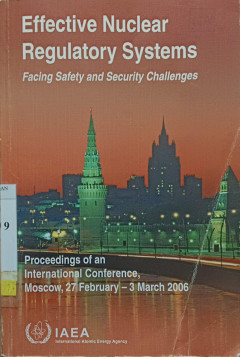
EFFECTIVE Nuclear Regulatory System
Independence and regulatory effectiveness; regulatory safety challenges; regulatory security challenges; enchanged International regulatory cooperation; regulatory effectivenes from the operations viewpoint.
- Edisi
- -
- ISBN/ISSN
- 92-0-1-110606-8
- Deskripsi Fisik
- 331 p. : ill. ; 21 cm
- Judul Seri
- -
- No. Panggil
- PRO 363.179 9 EFE
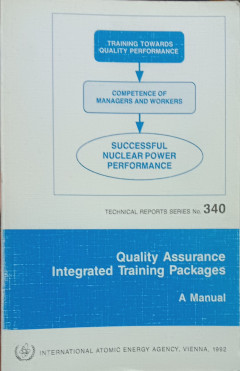
Technical Reports Series No.340 Quality Assurance Integrated Training Package…
The competence of the personnel to establish and implement an effective quality assurance programme is essential for attaining and maintaining the safety, reliability and economic performance of a nuclear installation. This manual offers training packages covering quality assurance principles and practices which can be adjusted to suit different levels of management and working personnel and ca…
- Edisi
- -
- ISBN/ISSN
- 92-0-103692-2
- Deskripsi Fisik
- 121p.;24cm.
- Judul Seri
- Technical Report Series No. 340
- No. Panggil
- 621.4838 IAE Q
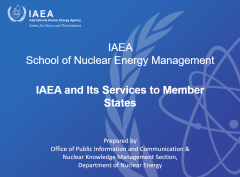
IAEA School of Nuclear Energy Management : IAEA and Its Services to Member St…
Materi slide ini membahas tentang sejarah Nuclear Knowledge Management School serta perkembangannya dari waktu ke waktu. Slide ini dipresentasikan dalam acara Rusia-IAEA Nuclear Knowledge Management School 2023.
- Edisi
- -
- ISBN/ISSN
- -
- Deskripsi Fisik
- -
- Judul Seri
- -
- No. Panggil
- 658.1 IAE A

The International Chernobyl Project An Overvew: Assessement of Radiological C…
- Edisi
- -
- ISBN/ISSN
- 9201290918
- Deskripsi Fisik
- 57p.;illus,21cm
- Judul Seri
- -
- No. Panggil
- 615.8 IAEA T
- Edisi
- -
- ISBN/ISSN
- 9201290918
- Deskripsi Fisik
- 57p.;illus,21cm
- Judul Seri
- -
- No. Panggil
- 615.8 IAEA T
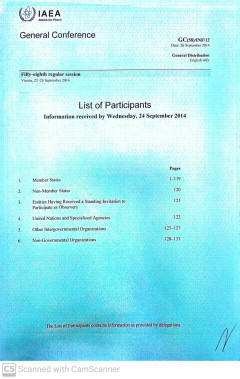
General Conference: List of Particioants Fifty-eighth regular session
- Edisi
- -
- ISBN/ISSN
- -
- Deskripsi Fisik
- 11p.;illus, 24cm
- Judul Seri
- -
- No. Panggil
- 015 IAE G
- Edisi
- -
- ISBN/ISSN
- -
- Deskripsi Fisik
- 11p.;illus, 24cm
- Judul Seri
- -
- No. Panggil
- 015 IAE G
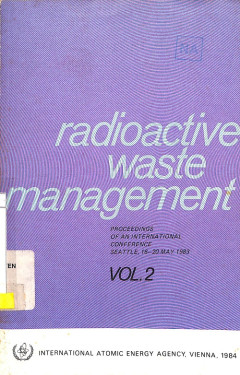
Radioactive Waste Management, Vol. 2: Proceedings of an International Confere…
Proceedings contains material Waste handling, treatment and conditioning at nuclear facilities (Session B.1); Handling, treatment and conditioning of waste from nuclear power plants (Session B.2); andling, Treatment and conditioning of waste from reprocessing plants: National experience (Session B.3); Handling, treatment and conditioning of high level and specific wastes from reprocessing plant…
- Edisi
- -
- ISBN/ISSN
- 9200203841
- Deskripsi Fisik
- 525 p. : Illus. ; 23 cm
- Judul Seri
- Proceedings Series
- No. Panggil
- 363.7289 PRO r v.2
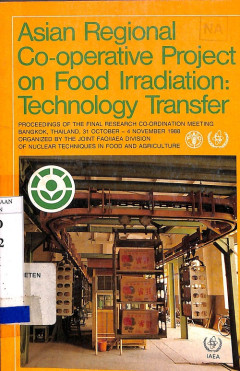
Asian Regional Co-operative Project on Food Irradiation : Technology Transfer…
Proceedings contains material Review; Radiation preservation of onions under tropical conditions; Combined treatments and irradiation to reduce microbial contamination in dried cuttle fish; Irradiation of hot peppers to improve their hygienic quality; Preservation of dried fish powders and mixed condiments by gamma irradiation; Commercial storage and marketing trials of irradiated onions and ga…
- Edisi
- -
- ISBN/ISSN
- 9201004923 / 00741876
- Deskripsi Fisik
- 183 p. : Illus. ; 24 cm
- Judul Seri
- -
- No. Panggil
- 539.2 PRO a
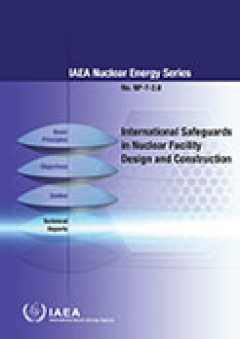
International Safeguards in Nuclear Facility Design and Construction: IAEA Nu…
This IAEA publication provides guidance on the inclusion of safeguards considerations in nuclear facility design and construction. This first volume introduces the basic principles of safeguards by design and discusses the goals, costs and rewards, and places the information into the context of nuclear facility design and construction. Benefits and opportunities for all stakeholders are emphasi…
- Edisi
- -
- ISBN/ISSN
- 978-92-0-140610-1
- Deskripsi Fisik
- 22 p.; 30 cm.
- Judul Seri
- IAEA Nuclear Energy Series
- No. Panggil
- 621.483 IAE i (2)
 Karya Umum
Karya Umum  Filsafat
Filsafat  Agama
Agama  Ilmu-ilmu Sosial
Ilmu-ilmu Sosial  Bahasa
Bahasa  Ilmu-ilmu Murni
Ilmu-ilmu Murni  Ilmu-ilmu Terapan
Ilmu-ilmu Terapan  Kesenian, Hiburan, dan Olahraga
Kesenian, Hiburan, dan Olahraga  Kesusastraan
Kesusastraan  Geografi dan Sejarah
Geografi dan Sejarah